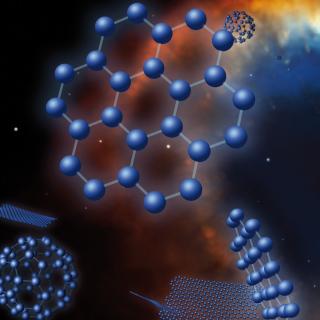Palle, E.; Orell-Miquel, J.; Brady, M.; Bean, J.; Hatzes, A. P.; Morello, G.; Morales, J. C.; Murgas, F.; Molaverdikhani, K.; Parviainen, H.; Sanz-Forcada, J.; Béjar, V. J. S.; Caballero, J. A.; Sreenivas, K. R.; Schlecker, M.; Ribas, I.; Perdelwitz, V.; Tal-Or, L.; Pérez-Torres, M.; Luque, R.; Dreizler, S.; Fuhrmeister, B.; Aceituno, F.; Amado, P. J.; Anglada-Escudé, G.; Caldwell, D. A.; Charbonneau, D.; Cifuentes, C.; de Leon, J. P.; Collins, K. A.; Dufoer, S.; Espinoza, N.; Essack, Z.; Fukui, A.; Chew, Y. Gómez Maqueo; Gómez-Muñoz, M. A.; Henning, Th.; Herrero, E.; Jeffers, S. V.; Jenkins, J.; Kaminski, A.; Kasper, J.; Kunimoto, M.; Latham, D.; Lillo-Box, J.; López-González, M. J.; Montes, D.; Mori, M.; Narita, N.; Quirrenbach, A.; Pedraz, S.; Reiners, A.; Rodríguez, E.; Rodríguez-López, C.; Sabin, L.; Schanche, N.; Schwarz, R. -P.; Schweitzer, A.; Seifahrt, A.; Stefansson, G.; Sturmer, J.; Trifonov, T.; Vanaverbeke, S.; Wells, R. D.; Zapatero-Osorio, M. R.; Zechmeister, M.
Bibliographical reference
Astronomy and Astrophysics
Advertised on:
10
2023
Journal
Citations
11
Refereed citations
8
Description
One of the main scientific goals of the TESS mission is the discovery of transiting small planets around the closest and brightest stars in the sky. Here, using data from the CARMENES, MAROON-X, and HIRES spectrographs together with TESS, we report the discovery and mass determination of aplanetary system around the M1.5 V star GJ 806 (TOI-4481). GJ 806 is a bright (V ≈ 10.8mag, J ≈ 7.3 mag) and nearby (d = 12 pc) M dwarf that hosts at least two planets. The innermost planet, GJ 806 b, is transiting and has an ultra-short orbital period of 0.93 d, a radius of 1.331 ± 0.023 R⊕, a mass of 1.90 ± 0.17 M⊕, a mean density of 4.40 ± 0.45 g cm−3, and an equilibrium temperature of 940 ± 10 K. We detect a second, non-transiting, super-Earth planet in the system, GJ 806 c, with an orbital period of 6.6 d, a minimum mass of 5.80 ± 0.30 M⊕, and an equilibrium temperature of 490 ± 5 K. The radial velocity data also shows evidence for a third periodicity at 13.6 d, although the current dataset does not provide sufficient evidence to unambiguously distinguish between a third super-Earth mass (M sin i = 8.50 ± 0.45 M⊕) planet or stellar activity. Additionally, we report one transit observation of GJ 806 b taken with CARMENES in search of a possible extended atmosphere of H or He, but we can only place upper limits to its existence. This is not surprising as our evolutionary models support the idea that any possible primordial H/He atmosphere that GJ 806 b might have had would be long lost. However, the bulk density of GJ 806 b makes it likely that the planet hosts some type of volatile atmosphere. With transmission spectroscopy metrics (TSM) of 44 and emission spectroscopy metrics (ESM) of 24, GJ 806 b is to date the third-ranked terrestrial planet around an M dwarf suitable for transmission spectroscopy studies using JWST, and the most promising terrestrial planet for emission spectroscopy studies. GJ 806b is also an excellent target for the detection of radio emission via star-planet interactions.
Related projects

Nucleosynthesis and molecular processes in the late stages of Stellar Evolution
Low- to intermediate-mass (M < 8 solar masses, Ms) stars represent the majority of stars in the Cosmos. They finish their lives on the Asymptotic Giant Branch (AGB) - just before they form planetary nebulae (PNe) - where they experience complex nucleosynthetic and molecular processes. AGB stars are important contributors to the enrichment of the
Domingo Aníbal
García Hernández

Exoplanets and Astrobiology
The search for life in the universe has been driven by recent discoveries of planets around other stars (known as exoplanets), becoming one of the most active fields in modern astrophysics. The growing number of new exoplanets discovered in recent years and the recent advance on the study of their atmospheres are not only providing new valuable
Enric
Pallé Bago

Very Low Mass Stars, Brown Dwarfs and Planets
Our goal is to study the processes that lead to the formation of low mass stars, brown dwarfs and planets and to characterize the physical properties of these objects in various evolutionary stages. Low mass stars and brown dwarfs are likely the most numerous type of objects in our Galaxy but due to their low intrinsic luminosity they are not so
Rafael
Rebolo López